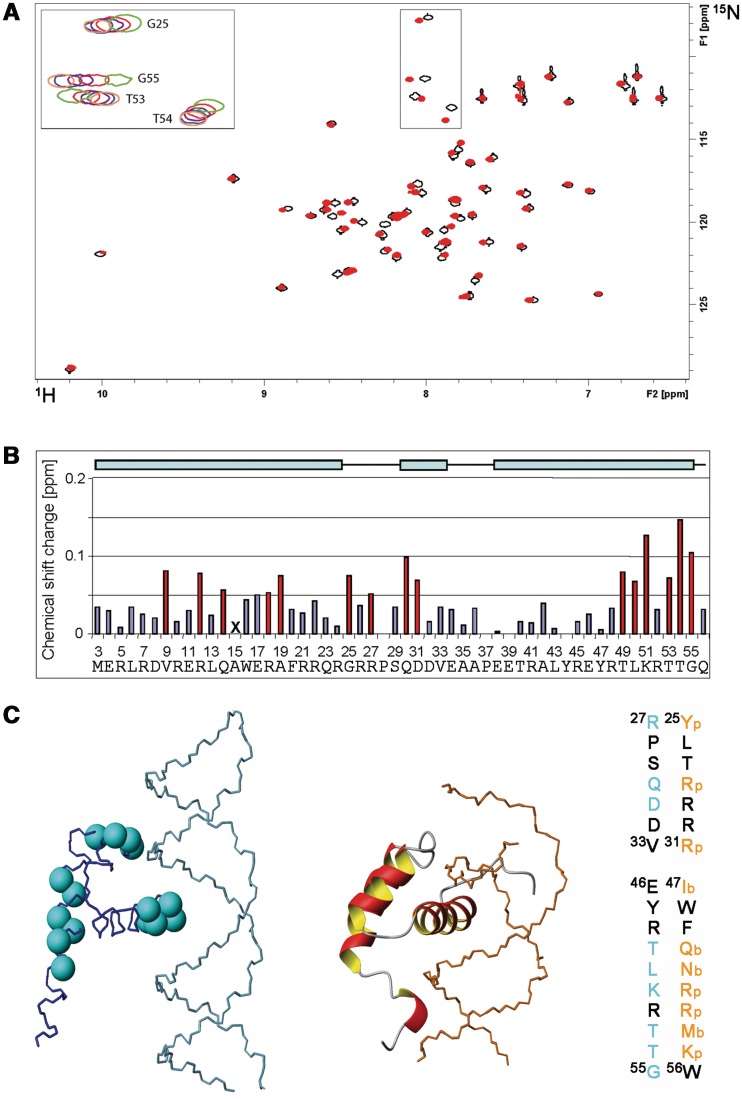Figure 6.
Interaction of RecQL4_N54 with DNA. (A) [1H,15N]–HSQC spectrum (15N chemical shifts in F1 and 1H chemical shifts in F2) of RecQL4_N54 (170 µM) without (black contours) and with 3-fold excess (red contours) of dsDNA. The inset (upper left) depicts an overlay for selected cross-peaks (boxed in spectra) of spectra recorded with protein:DNA ratios of 1:0 (green contours), 1:0.5 (red), 1:1 (magenta), 1:2 (blue) and 1:3 (coral). Residue assignments for the inset are indicated, a fully assigned [1H,15N]–HSQC is given in the Supporting Information. (B) Chemical shift changes for each backbone amide group of RecQL4_N54 at 3-fold molar excess of the 24 mer dsDNA. The chemical shift change was determined for the 15N/1H cross-peak of the backbone amide group of each residue in the spectrum of free RecQL4_N54 to the nearest 15N/1H cross-peak in the spectrum of the RecQL4_N54:DNA complex using the relationship |Δδ(1H)| + |Δδ(15N)|/7 (45). Values above the average chemical shift perturbation of ∼0.05 ppm are depicted in red. The X for Ala15 indicates that the corresponding cross-peak was broadened beyond detection at 3-fold molar excess of dsDNA. The cyan bars on the top indicate the positions of the α-helices in RecQL4_N54. Note that the first native RecQL4 residue is M3. The numbering of the a.a. positions in RecQL4_N54 starts with two non-native residues derived from the expression construct to maintain consistency with the related PDB (2KMU) and BMRB (16544) database entries. Therefore, the numbering of the residues is shifted by two compared to the native protein. (C) Left panel: Cyan balls at the position of the nitrogen atom highlight the residues in RecQL4_N54 for which chemical shift perturbation above average was observed. Centre panel: For comparison, the Antennapedia homeodomain–DNA complex [PDB code 1AHD; (35)] is presented. Right panel: Sequence comparison between RecQL4_N54 and Antennapedia. Orange: Residues interacting with the phosphate/sugar backbone of the DNA (p) or contributing in base recognition interactions (b) in the Antennapedia homeodomain–DNA complex. Cyan: Residues experiencing significant chemical shift perturbation in RecQL4_N54.

